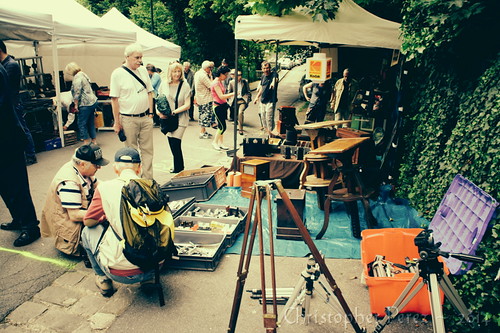A collaborative work between Arthur Morgan, Etienne Barillier, and myself and a cast of dozens of talented people has been released into the wild. Fiction number 19, ete (summer) is a French fantasy/sci-fi mook (magazine-book). It contains well written stories, articles, and, now, photographic portfolios of related subject matter.
Our series of images and words cover a range of ten characters and personages famous or infamous in French history and literature. Arthur Morgan brought us together to recreate these people in a very Steampunk style. We worked with talented creative costumers to bring the reinterpretations of history to life. Everyone brought something rather special to the project.
From a photographic perspective, the effort covered a wide range of situations and possibilities. We shot on location at the Palais Garnier (the old and still incredibly beautiful Paris opera house), Pont Alexandre III (of which more will be seen in my next major project), in the narrow streets of l'isle Saint Louis, Parc Georges Brassens, and in the studio. We shot in the cold. We shot in strong wind. We shot in the rain. We shot in small spaces. We shot in vast landscapes. All involved using strobe techniques to help isolate and properly light our amazing subjects. Quickly followed by image processing (press ready) using the Gimp.
The entire project was shot and processed in three weeks in March, 2014. That was the month before my wife and I returned to the US to clear out our "Plan B" storage unit. We'd kept just enough furnishings and personal items to populate an apartment should Paris not have worked out. This photo project was wedged into our lives and, well, the results are in the viewing.
Our work has been reviewed by Lorkhan et les mauvais genre. Here is a translation of our portion of the review.
... And finally, the portfolio that struggled to convince in the previous issue is back, except that this time it is very successful! A collaboration between Stephen Barillier, Arthur Morgan and American photographer Chistopher Perez, offers us a gallery of the most famous characters from the imaginary (and also some real), the French, and the late nineteenth / early twentieth century, all mixed with a nice steampunk sauce. Fantomas, Dr. Mabuse Rouletabille, Arsène Lupin, Marie Curie, Mata Hari and so on, a real nice little collection, with an explanatory text for each of them, it is a real success!...
A real success, eh? Right nice words, those. Yes, we're thrilled.
I've put off posting outtakes from the project until September. I'm doing this so that French readers have time to go away pour les vacances. I'd like to share these images with as wide an audience as possible and feel I'll have everyone's attention after spending a relaxing month or two in the summer sun.
As has been said many times: Stay tuned!

Our series of images and words cover a range of ten characters and personages famous or infamous in French history and literature. Arthur Morgan brought us together to recreate these people in a very Steampunk style. We worked with talented creative costumers to bring the reinterpretations of history to life. Everyone brought something rather special to the project.
From a photographic perspective, the effort covered a wide range of situations and possibilities. We shot on location at the Palais Garnier (the old and still incredibly beautiful Paris opera house), Pont Alexandre III (of which more will be seen in my next major project), in the narrow streets of l'isle Saint Louis, Parc Georges Brassens, and in the studio. We shot in the cold. We shot in strong wind. We shot in the rain. We shot in small spaces. We shot in vast landscapes. All involved using strobe techniques to help isolate and properly light our amazing subjects. Quickly followed by image processing (press ready) using the Gimp.
The entire project was shot and processed in three weeks in March, 2014. That was the month before my wife and I returned to the US to clear out our "Plan B" storage unit. We'd kept just enough furnishings and personal items to populate an apartment should Paris not have worked out. This photo project was wedged into our lives and, well, the results are in the viewing.
Our work has been reviewed by Lorkhan et les mauvais genre. Here is a translation of our portion of the review.
... And finally, the portfolio that struggled to convince in the previous issue is back, except that this time it is very successful! A collaboration between Stephen Barillier, Arthur Morgan and American photographer Chistopher Perez, offers us a gallery of the most famous characters from the imaginary (and also some real), the French, and the late nineteenth / early twentieth century, all mixed with a nice steampunk sauce. Fantomas, Dr. Mabuse Rouletabille, Arsène Lupin, Marie Curie, Mata Hari and so on, a real nice little collection, with an explanatory text for each of them, it is a real success!...
A real success, eh? Right nice words, those. Yes, we're thrilled.
I've put off posting outtakes from the project until September. I'm doing this so that French readers have time to go away pour les vacances. I'd like to share these images with as wide an audience as possible and feel I'll have everyone's attention after spending a relaxing month or two in the summer sun.
As has been said many times: Stay tuned!








